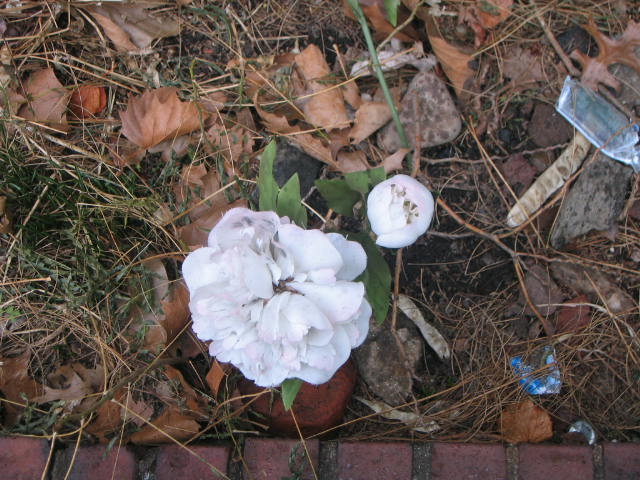Really

As a native New Yorker, I have spent a lot of time roaming the streets of Manhattan. And over the years, I have developed a relationship with places and monuments and landmarks and street signs. Certain sites are clichéd or understandable: admiring the sadness and the fury of the skyline or basking in the glow of the brilliant lights enveloping the Empire State Building.
I also get enormous pleasure viewing things I think of as “mine”— a ‘70s style rainbow decal in the window of a townhouse on West 13th Street, a wooden owl on the awning of a building on East 29th Street, a windmill on Hudson Street I used to think was a vertical helicopter, and the old Economy Foam sign on Allen Street in the East Village. These things, of course, are not really mine, but somehow I imagine I have a secret relationship with them. To me, they are not really “things,” they all have private lives and little souls. To me, they are real.
My favorite thing to behold in all of Manhattan was actually on the street that I live. It was a big bush of white peonies. It lived in a small messy garden in front of an apartment building that was once rumored to be a crack house. But every year, in the depths of March, little buds would poke up through the thawing earth, and every day I would watch the drama of these peonies unfurl. First came the fringy black stems, then the leaves would turn green, then they would spurt forth tiny, perfectly round buds, then, seemingly overnight, the buds would turn white and voila! They would burst open in the most fantastically glamorous way. It was magical and mysterious and it made me very, very happy. Watching it year after year, I often wondered how the bush got there. Who planted it? Did it self-sow? I desperately wanted to know.
One day some years ago, while walking my dogs, I bumped into my neighbor Kathy, who has lived on our block for 40 years. She has a dog my dogs love. As our pups frolicked together on the sidewalk, I realized we were in front of the house with the peonies. I asked Kathy, “Do you know who planted these flowers?” She told me she did, and recalled a story about a little girl who was selling seeds to raise money for her grade school and how someone in the crack building bought a package of seeds and planted the entire pack in front of the house. The little girl wasn’t a little girl anymore and she had moved away sometime ago, as did the person who had planted the seeds. Together we nodded, admired their long lasting handiwork and went our separate ways.
Late last summer, walking home from work in the pink and purple August twilight, I realized that the peony bush was no longer there. It was gone. There wasn’t a hole where the plant had been; there wasn’t a splattering of dirt or debris. The bush simply disappeared. It was as if it had never been there at all, as if it hadn’t been real. I was devastated.
The nature of “what is real” is a confounding concept. Philosophers and scientists alike have attempted to define what is real, along with the nature of the consciousness that defines what is real.
Plato maintained that two distinct levels of reality exist: the visible world of sights and sounds which we live in, and the intelligible world he referred to as “forms” which stands above the visible world and gives it meaning. Plato believed that the “idea of things” is the only true reality, and that “actual things” are only the appearance of reality. He believed that in our everyday experiences we suffer from the illusion that the things and objects around us constitute the ultimate reality. Furthermore, he believed that our ideas not only reveal our subjective inner states, but the true nature of reality itself.
So I had to wonder. Where were the peonies? How could they have disappeared without a trace? Could someone have been so cruel as to steal the bush and clean up after the theft? My mind raced. Could I put up a “Missing Peonies” poster? Were other people missing the flowers? And I couldn’t help but ponder in sadness: were the peonies ever real?
The last couple of months the world has been witness to events that have shaken me to the core and disgusted and frightened me. Seeing the private parts of Britney Spears was sadly bewildering. But all through the experience I remained skeptical. This couldn’t be happening, this couldn’t be real! But as the pictures kept coming and Britney herself admitted to the authenticity of the photos, I had to accept the fact that, yes indeed, this were real.
Then, on the other end of the reality spectrum, was the broadcasted cell phone footage of the hanging of Saddam Hussein. It was with a combination of revulsion and curiosity that I clicked on the link from Viral Videos and watched a man who looked like the former dictator fall through the primitive wooden gallows to a gruesome death. Again, I was skeptical. This couldn’t be happening, this couldn’t possibly be real! How could we be witnessing capital punishment via footage from a cell phone? But as both the Iraqi and US governments admitted to the authenticity of the video, I had to accept the fact that, yes indeed, this too was real.
Privacies of every sort are now inscribes with an impression on our culture. Things once thought free from this, even opposed to it: clandestine body parts, intimate sexual behavior, moments of life and death, find it ever more difficult to retain autonomy in the face of things such as reality television, YouTube and MySpace. Things we now romantically and proudly call “real” or “user generated.” But we have become sensitized to this as well. Because, now, at the very same time, smaller and smaller temporal and physical crevices are being packed with the messages of this so-called reality, or what we believe is real.
Last Sunday I was last minute holiday shopping, my arms loaded with big bags of holiday presents and wrapping paper. As I was making my way home, I passed the spot where my beloved peonies once resided. And I stopped short. In a spot near to where the peonies once regaled was a new bush of blooming white peonies. I couldn’t believe it. I approached the plant with care, and once again, I was skeptical. This couldn’t be happening, this couldn’t possibly be real! As I neared the bush, I put down my bags and took off my gloves. I reached out to touch the peonies and suddenly realized: they weren’t real. Someone had put a plastic peony plant near where the real bush had once lived. One imaginative neighbor was remembering the missing peonies and this was their memorial. I smiled and suddenly felt hopeful that a fake peony bush could indeed be a very real testament to what is most real in our hearts and in our minds.


















5 Comments:
I enjoy your opening monologues. Great kickoff to season 4, Debbie. Cheers, mel.
of those net-sources on design, culture and related things that i frequently switch to, you are the only one even touching the public execution of saddam hussein. ...as if that would not matter...
it matters.
thanks.
thank you, jkh. i just posted a much longer piece about this on the design blog Speak Up.
thanks debbie.
btw. congratulations to your fabulous show. - in the 90s i was involved with the german design magazine 'form' and 'form publishing house' in frankfurt, germany. - we developed a number of successful book series and had also briefly worked on a concept for a TVformat - which we actually dropped because design-shows - like design exhibitions can be a pretty nasty thing: they are mostly pretty weak when you put the product/work in the center - ok one can make it biographical - or group it around a topic - but none of these ideas really convinced us.
i was reminded of our (short) struggle when i realized how wonderfully your concept works to enter through a completely different room. - of course you know that - but let me just say it again: when you define design as finding a smart solution under a number of given constrains, opening up with your monologue does a marvelous job, and is a little design masterpiece in its own right.
very well done in many ways.
thank you.
jkh--thank you so very, very much.
Post a Comment
<< Home